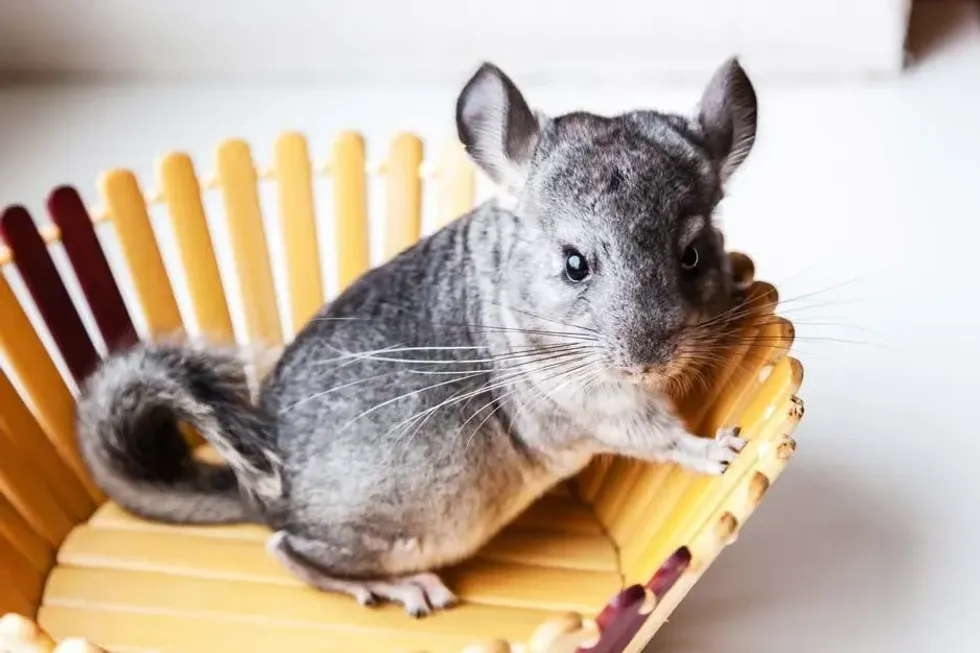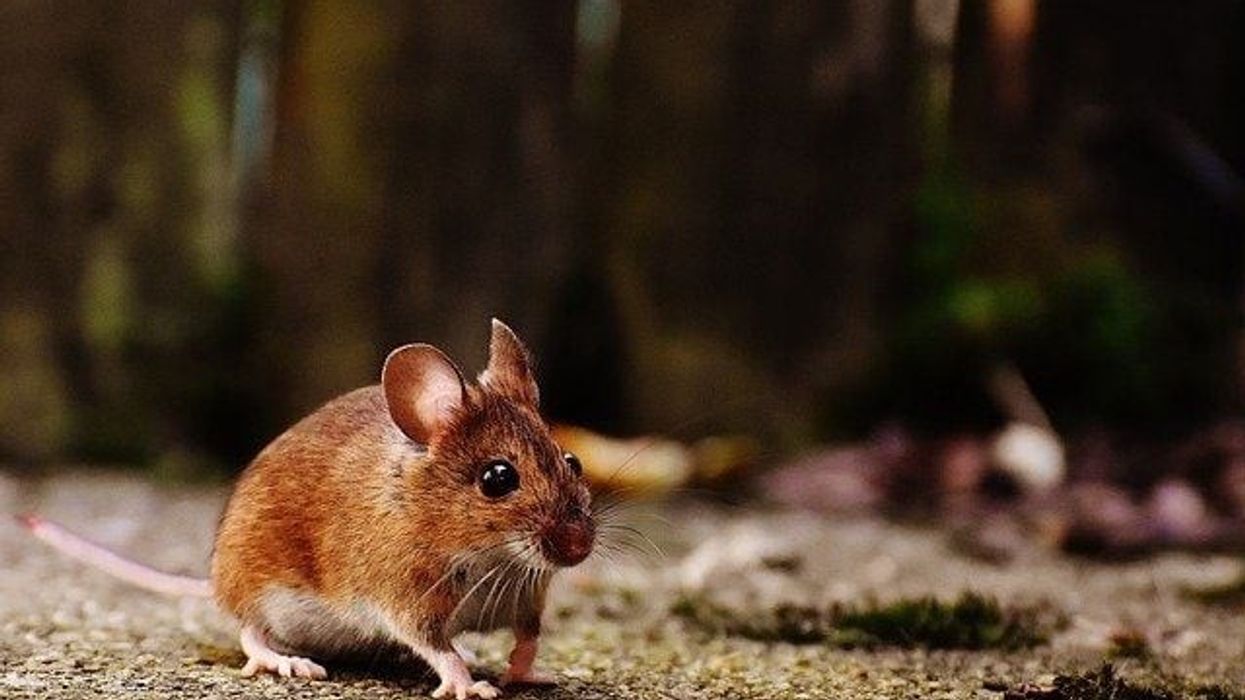Have you been thinking about adopting a Chinchilla? Here, you will know everything that should be known about these beautiful rodents.
Chinchillas have recently been domesticated, and they have been in human households for about 100 years. However, these cute rodents originate from the Andes mountains of South America. Currently, the wild population is restricted to the mountains of Chile.
They are extensively found as pets, but their numbers have been declining in the wild. The chinchillas are known for their thick fur, which is made of hair.
They have the densest fur amongst all land mammals and are only beaten by a sea otter. There are two predominant kinds of chinchillas found in the world, the long-tailed chinchilla and the short-tailed chinchilla. The wild Chinchillas prefer to stay in burrows and crevices of rocks as they cannot stand high heat.
These mammals mainly feed on grass and leaf to keep themselves full of fiber. They can grow as big as a squirrel and live for a long time, up to 20 years.
Keep on reading to know all the fun Chinchilla facts. Do check out marsupial facts and short beaked echidna facts to know more about animals.
Chinchilla Interesting Facts
What type of animal is a Chinchilla?
Chinchillas are rodents who are native to the Andes mountains of South America.
What class of animal does a Chinchilla belong to?
Chinchillas belong to the class 'Mammalia' and the family 'Chinchillidae'.
How many Chinchillas are there in the world?
No conclusive research has been done to find the exact number of chinchillas that are left in the world. However, as the chinchillas are considered 'vulnerable', it has been noticed that there is a threat to the lives of wild chinchillas.
Most of its population is restricted to the Chilean mountains, where the estimated number of them is about 10,000 individuals.
Where does a Chinchilla live?
In wild, the chinchillas are used to inhabiting places like coastal regions, hills, and mountains of Chile. They have also been found in Peru, Argentina, and Bolivia. However, due to the pet trade, the most significant population of chinchillas live with humans. This is especially true for the long-tailed chinchilla also known as chinchilla lanigera.
What is a Chinchilla's habitat?
Chinchillas can live in an area with an elevation of up to 9,800 ft to 16,400 ft (3,000 m to 5,000 m). In the wild, they tend to live in burrows.
Their thick fur that is mostly constituted of hair, has developed as a way to cope up with the environment of the Andes mountain. This thick fur makes the chinchilla a bad candidate for living in warm or hot weather.
They can easily die of a heat stroke because they lack sweat glands and cannot tolerate heat.
Wild chinchillas get comfortable in their burrows to stay away from the hot weather during the summers and the freezing cold during the winters. They also tend to be crepuscular and nocturnal, i.e.
they are most active during dusk and dawn while they sleep during the daytime. According to the International Union for Conservation of Nature (IUCN) Red List, the Chinchillas living in the wild are habituated to rocky and sandy areas with little to no vegetation cover.
As chinchillas are also kept as pets, it is important for the pet parents to know more about these little rodents. They need a comfortable space that is slightly on the cooler side.
Also, they do appreciate a quieter space in your house. Another thing to keep in mind is that they require enough space to get their exercise.
A multilevel house is the best thing that you can get as it helps to give the pet have a feeling of living in the burrows. During the summer, make sure that their room doesn't get hotter than 77°F or 25°C.
Who do Chinchillas live with?
In the wild, chinchillas are used to living in groups known as 'herds', consisting of up to 100 members. However, for the last 100 years, chinchillas have entered the pet market and have been specifically bred to adjust to a domestic lifestyle. So, most of them now live with humans as their numbers keep on dwindling in the wild.
How long does a Chinchilla live?
Their average lifespan is about 10-20 years. They are considered to be one of the longest living rodents, some even making it to 25 years of age. If they get a correct habitat as a pet, these rodents can live a really long life.
How do they reproduce?
Chinchillas in the wild can mate throughout the year, and females go through multiple 38-day estrus cycles in a year. A single female Chinchilla can carry up to three litters every year.
They have a long gestation period of about 111 to 124 days, compared to other rodents. Due to this, the young chinchillas are born with their signature thick fur and fully developed eyes.
Though there are no set breeding seasons, they may specifically reproduce during November to May in the Northern Hemisphere and during May to November months in the Southern Hemisphere. Females are known to be more aggressive than their male counterparts. And, this aggression increases during their estrus cycle.
In one litter, a chinchilla can give birth to one to six babies, but most of them carry two babies per birth. Baby chinchillas are weaned after 45 days of birth, and they are fully grown-up after eight months.
The male chinchillas stick around to help with the babies, but they do have multiple female mates. Whereas female chinchillas tend to be monogamous throughout their life.
What is their conservation status?
According to the International Union for Conservation of Nature (IUCN) Red List, both species of chinchilla are in a 'Vulnerable' state. In the wild, the animals have already been restricted to the Chilean mountains. However, a large number of these animals are present in human households as pets, especially in the United States.
Chinchilla Fun Facts
What do Chinchillas look like?

People often confuse chinchillas with rabbits, but they don't look alike. Chinchillas have a similar look to that of a squirrel. They have a covering of thick, soft fur on their small bodies.
One of the interesting chinchilla fur facts is that 50 hairs can grow from a single hair follicle. The fur is an adaptation against the harsh climate at their native place.
Chinchillas can come in varied colors, and the range has diversified after they have been domesticated. Most of them are either gray or have a mix of gray and white hair. White chinchillas are also found, which are mainly meant to be kept as pets.
One of the distinct features of chinchillas is their velvety ears. The short rounded ears of this animal make them extremely cute. Their forelimbs are short, but their main power comes from the hind legs.
The long and muscular hind legs give them the capability to jump quite high. Their glossy black eyes stand out.
Chinchillas have four digits on each foot, and their sharp claws are surrounded by hair. Chinchillas have teeth that grow throughout their life. So, they must regularly gnaw on things to keep their teeth from growing to extreme levels.
How do they communicate?
Chinchillas communicate with the help of vocalization. One of the fun facts about them is that they can make ten types of sounds to communicate.
How big is a Chinchilla?
An adult Chinchilla can grow up to be 9 - 15 in (23 - 38 cm), with an additional tail length of 3 - 6 in (8 - 15 cm).
How fast can a Chinchilla run?
Chinchillas can have an average speed of 15 mph or 24 kph.
How much does a Chinchilla weigh?
The adult Chinchillas can weigh anywhere between 1 lb - 2 lb (453 g to 907 g). The females are slightly larger than the males. Chinchillas that are kept as pet animals, can grow heavier compared to the wild ones because of domestication.
What are their male and female names of the species?
There are no distinct names for female and male Chinchillas.
What would you call a baby Chinchilla?
Chinchilla babies are called 'kits'.
What do they eat?
Chinchillas are herbivores who mainly sustain on grass and leaves. However, a domesticated pet chinchilla will most likely have a pellet-based diet. As chinchillas have ever-growing teeth, they should have access to hay.
Another thing about their diet is the need for fiber. Dietary fiber helps to keep a chinchilla healthy. Their diet may also include vegetables and fruits in limited quantities.
One of the chinchilla facts you need to know is their process of digesting food. They follow something known as 'caecotrophy', which makes them similar to the rabbits. Chinchillas first produce caecotrophs, which they consume again, to start the digestion all over again.
Are they dangerous?
No, chinchillas aren't aggressive. However, they can end up biting someone if they are being irritated or handled improperly. As they have been bred as pets, chinchillas are often friendly and responsive to their humans. However, they aren't suitable for being your cuddle buddies.
Would they make a good pet?
Yes, chinchillas do make good pets. However, a chinchilla that has been bred to be a pet is different from a wild chinchilla. Domesticated chinchillas have a calm temperament.
They are also quite smart, and humans can easily teach them tricks. It isn't very hard to take care of a chinchilla, but you need to ensure that they have enough space. Enough fiber should be present in the diet of a chinchilla, and they should always have access to clean water.
Chinchillas have ever-growing teeth, so they need toys to gnaw their teeth at. Safe wood blocks and other chew toys work wonderfully.
They should also have access to good quality hay that helps them in increasing their fiber portion as well as to keep their teeth healthy. It is advisable not to get a chinchilla at a place that is hot or humid.
At home, chinchillas like to live in tall cages that have an ample amount of space. Chinchillas also need to have regular dust baths to keep their coat healthy.
It is the only way for them to take care of their thick fur. Pet parents can buy the dust that is required for taking the dust baths, and the same thing can be used multiple times for cleaning their fur.
Regular vet visits ensure that you have a healthy chinchilla that will live for a long time. Do not leave your chinchilla alone for a long time as they can easily develop separation anxiety.
Did you know...
Chinchillas are closely related to porcupines.
One of the reasons for the declining number of chinchillas is the extensive fur trade. It has been going on since the 16th century. For making a single garment more than 150 Chinchillas can be killed because of their small size.
The Chinchilla's characteristics
Chinchillas are friendly to humans and can perform tricks when they are trained well. However, chinchillas are also known for being shy, so it's important to give them private space. In the wild, chinchillas are social animals who live in herds and participate in raising their young.
Can you keep Chinchillas pets?
Yes, in many countries it is legal to keep chinchillas as pets. However, they should be given enough space to thrive. The initial cost of getting chinchillas is around $150-$350. Chinchilla pet animals are illegal to keep in Australia due to the country's delicate ecosystem that can get hampered with the introduction of a new animal.
Here at Kidadl, we have carefully created lots of interesting family-friendly animal facts for everyone to discover! Learn more about some other mammals including the field vole and the jaguarundi.
You can even occupy yourself at home by drawing one on our chinchilla coloring pages.









